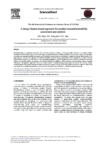
|
A Design Feature-based Approach for Product Remanufacturability Assessment and Analysis
S.K. Ong, H.C. Fang, A.Y.C. Nee
10th International Conference on Axiomatic Design, 2016
https://www.sciencedirect.com/science/article/pii/S2212827116307260
Remanufacturing is a promising end-of-life (EoL) recovery strategy to achieve a close-loop product lifecycle in sustainable product development. Product design can have substantial impact on product remanufacturability and product EoL recovery strategy. Existing studies on design-based remanufacturability assessment are either based on design charts or consideration of simple embodiment design features. This paper presents a feature-based approach for remanufacturability assessment using comprehensive CAD information, e.g., bill-of-material, mating features, tolerance and dimension, etc. For each product component, a generic information model is defined to manage critical design features for remanufacturability assessment, which include both inherent attributes of the component and interrelations among connected components. The proposed approach assesses two critical aspects in remanufacturing, namely, part disassembly and recovery. Design evaluation based on the remanufacturing assessment and part EoL recovery strategy can provide feedback to enhance the product design to be more in line for sustainable manufacturing. A case study of an automotive part is presented to validate the proposed approach.
|
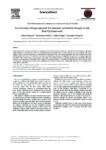
|
An Axiomatic Design Approach for Customer Satisfaction through a Lean Start-up Framework
Andrea Girgenti, Beniamino Pacifici, Andrea Ciappi, Alessandro Giorgetti
10th International Conference on Axiomatic Design, 2016
https://www.sciencedirect.com/science/article/pii/S221282711630720X
Value generation and customer satisfaction are the primary goals for those companies which want to be successful and profitable on the global market. Achieving these objectives is key for a middle-long term successful business model. Missing them may eventually lead to the company’s failure, and also it might be a very difficult task to accomplish. Due to its strategic importance, the overall business model, along with the products and services to be delivered, should be assessed iteratively, defining their importance in respect with the customer needs and expectations. This control check is often experience-based rather than rationally guided, even in large and structured organizations. This paper proposes a novel approach to systemically build a customer development model, to verify the agreement between what is offered and the customer needs. The proposed customer model is built through the Axiomatic Design method, together with other tools that are properly tuned for this specific application.
|
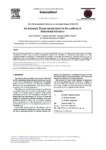
|
An Axiomatic Design Interpretation for the Synthesis of Dimensional Tolerances
João Fradinho, António Mourão, António Gabriel-Santos, António Gonçalves-Coelho
10th International Conference on Axiomatic Design, 2016
https://www.sciencedirect.com/science/article/pii/S2212827116307247
Synthesizing dimensional tolerances of mechanical systems involves finding the values of the allowable variation of the functional dimensions. According to Axiomatic Design, the synthesis of mechanical tolerances can be described as a redundant decoupled design. This is why experienced engineers are proficient in solving this kind of problems, even if they never heard about Axiomatic Design and about the independence axiom. This paper presents an Axiomatic Design interpretation for the synthesis of dimensional tolerances. This interpretation shows that the traditional method for solving this class of problems implicitly obeys the independence and the minimum information axioms.
|
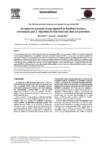
|
An Improved Axiomatic Design Approach in Distributed Resource Environment, Part 2: Algorithm for Functional Unit Chain Set Generation
Bin Chen, Jun Liu, Youbai Xie
10th International Conference on Axiomatic Design, 2016
https://www.sciencedirect.com/science/article/pii/S2212827116308526
To technologically achieve the transformation from functional requirements (FRs) to design parameters (DPs) in the axiomatic design (AD) theory, this paper employed the basic hypothesis, definitions and model developed in PART 1 of our study to establish an algorithm for functional unit chain set (FUCS) generation. This algorithm is established on two mappings from the developed conceptual foundation to the graph theory, i.e. treating functional units (FUs) as nodes, and treating connections between FUs as edges. With this two mappings, a graph consisting of FUs can be created, which is called the functional unit graph (FUG). Based on the depth-first search (DFS) strategy in the graph theory, the algorithm generating FUCSs from the FUG was finally established. As an additional function, a preliminary evaluation for the generated FUCSs was also proposed. To prove the feasibility of this algorithm, a solar-powered wiper blades, and the load module of a friction-abrasion testing machine were designed as illustrations.
|
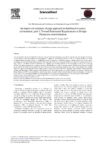
|
An Improved Axiomatic Design Approach in Distributed Resource Environment, Part 1: Toward Functional Requirements to Design Parameters Transformation
Jun Liu, Bin Chen, Youbai Xie
10th International Conference on Axiomatic Design, 2016
https://www.sciencedirect.com/science/article/pii/S2212827116307843
How to transform Functional Requirements (FRs) into Design Parameters (DPs) plays a key role in using the Axiomatic Design (AD) theory. However, the AD theory does not provide such an approach to support the transformation from FRs to DPs. As the meantime, there is a trend to use internet-based knowledge service in a distributed resource environment to efficiently generate a design concept. The authors aim at developing an improved axiomatic design approach. This approach consists of two parts, part 1 built a new model for the transformation from FRs to DPs in a distributed resource environment; part 2 proposed an achieving algorithm for the generation of Function unit chain sets (FUCSs). The studies are based on a hypothesis that almost all of the FRs can be met by a function unit set. The DPs of each Function Unit (FU) are provided by knowledge service suppliers. In such a distributed resource environment, designers only need to search function units via their inputs and outputs and integrate them into a concept solution to meet a functional requirement. This paper firstly defined the basic definitions of Functional Requirements (FRs), Functions (Fs), Function Units (FUs), Function unit sets (FUSs), Function unit chain sets (FUCSs) and Design Parameters (DPs), then described the transformation process in detail, thirdly, proposed principle forms for calculating the outputs in FUSs, finally, used a case study to illustrate the proposed approach by analyzing the design process of a friction-abrasion testing machine.
|
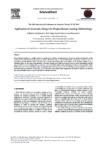
|
Application of Axiomatic Design for Project-based Learning Methodology
Gabriele Arcidiacono, Kai Yang, Jayant Trewn, Luca Bucciarelli
10th International Conference on Axiomatic Design, 2016
https://www.sciencedirect.com/science/article/pii/S2212827116308460
Project-Based Learning is a method based on constructivist finding, its application is centred on project development as the learning tool catalysing knowledge discovery. Project-Based learning have been traditionally designed and implemented on a know-how and trial-and-error basis, but tasks and decisions taken during the design phases of the training modules have a substantial effect on its quality and outcomes. Axiomatic Design can contribute to improve the outcomes opportunities and the process efficiency by identifying where complexity exists within the requirements and design activities that underpin the model. In this study, the Axiomatic Design method is applied to link learning outcomes of Lean Six Sigma training with all the teaching processes and the availability of resources. As a conclusion some improvement suggestions are made to optimize the learning and teaching methodology in order to maximize the learner outcomes.
|
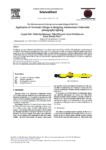
|
Application of Axiomatic Design in Designing Autonomous Underwater Photography Lighting
Jevgenij Guls, Ólafur Ingi Bjarnason, Óskar Pétursson, Sævar Örn Einarsson, Joseph Timothy Foley
10th International Conference on Axiomatic Design, 2016
https://www.sciencedirect.com/science/article/pii/S2212827116307442
The Biology department of the University of Iceland is using a Gavia Autonomous Underwater Vehicle (AUV) to take high-resolution images of the seabed at various depths for research purposes. However, after a new color camera module was developed for the AUV, obtaining high-quality images has proven to be difficult with the original strobe light. Axiomatic Design was employed to develop a suitable lighting module suitable for still images and video. The performance of different light sources in water was investigated to determine design parameters. The completed design uses LED lights should work with the new camera module at operating depth without compromising AUV dynamics nor significantly impacting mission time.
|
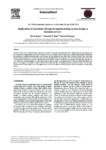
|
Application of Axiomatic Design in Manufacturing System Design: A Literature Review
Erwin Rauch, Dominik T. Matt, Patrick Dallasega
10th International Conference on Axiomatic Design, 2016
https://www.sciencedirect.com/science/article/pii/S2212827116308514
Axiomatic Design (AD) is applied not only in product development, but also in many other applications. Through the systematic approach and the consideration of Independence Axiom and information Axiom, even highly complex projects can be mastered reducing the complexity in the design task. In addition to product design, system design, software design and many other fields, Axiomatic Design is also used in the design of manufacturing systems. In form of a literature review, this paper studies the beginnings of AD in Manufacturing System Design and its development in the field of production. The data basis of this analysis are the works indexed in the Scopus about Manufacturing Systems with the keyword Axiomatic Design. In a first step, the paper examines, when the application of AD in Manufacturing System Design has begun and investigates the number and type of publications dealing with this methodology in Manufacturing. In a second step, the paper explores for which specific topics AD has been applied over the years, and which are current and future tasks for AD in Manufacturing System Design.
|

|
A Product Design Based on Interaction Design and Axiomatic Design Theory
Run-jie Lu, Yi-xiong Feng, Hao Zheng, Jian-rong Tan
10th International Conference on Axiomatic Design, 2016
https://www.sciencedirect.com/science/article/pii/S2212827116308344
With the development of technology, the improvement of living standards, personalized designs that emphasize diversity and self-fulfillment are becoming more and more popular. As a result, designers must focus more on user needs. Traditionally, most of designers only focus on satisfying users’ functional needs and often ignore users’ emotional and psychological needs. This paper presents a design method that combines interaction design with axiomatic design. The proposed method first employs interaction design to acquire user needs with respect to three aspects: “people”, “products” and “environment” and then adopts axiomatic design to complete the conceptual design. The methodology is demonstrated and validated with a case study of children bicycle. The results show that the proposed method significantly enhances users’ experience of the product and meets more comprehensive user needs, especially in terms of users’ psychological and spiritual needs.
|
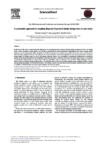
|
A Systematic Approach to Coupling Disposal of Product Family Design (Part 2): Case Study
Xianfu Cheng, Haoyang Qiu, Renbin Xiao
10th International Conference on Axiomatic Design, 2016
https://www.sciencedirect.com/science/article/pii/S2212827116308472
In this part of the work, we described the application of coupling disposal of product family design proposed in Part 1 on bridge crane. Firstly, axiomatic design theory was utilized as framework to analyse functional requirements and select suitable design parameters with “zigzagging” mode. Secondly, the trolley of bridge crane and its safety protection devices were considered as a real case to be analysed in detail. According to the relation between functional requirements and design parameters, axiomatic design matrix of bridge crane was built, and design structure matrix was constructed. Considering comprehensive correlation degree among design parameters including their functional relevance, connection relevance and physical relevance, we clustered and grouped design parameters into modules with less dependent degree in design structure matrix. Then coupling incidence matrix of product family design for the trolley is established, and it is discussed on the coupling inside modules and the coupling among design parameters with different modules. According to analysis on incidence influence degree, implementation sequence of modules is identified and corresponding decoupling method is proposed.
|
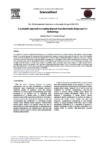
|
A Systematic Approach to Coupling Disposal of Product Family Design (Part 1): Methodology
Renbin Xiao, Xianfu Cheng
10th International Conference on Axiomatic Design, 2016
https://www.sciencedirect.com/science/article/pii/S2212827116308496
In this paper, on the basis of comparison and analysis on the similarities and differences of design coupling between product family and single product, a systematic approach to coupling disposal of product family design is proposed, and coupling disposal flow of two level including strategy level and operation level is given. From strategy level of platform plan, axiomatic design theory is utilized as framework to analyze and classify functional requirements, design parameters are mapped with “zigzagging” mode, and platform parameters are identified. In the view of platform operation level, design structure matrix (DSM) converted by design matrix DSM are clustered and grouped into modules, and coupling correlation matrix of product family design is established, which can realize high cohesion degree in a single module and low coupling degree among all the modules. Then, from the coupling inside platform modules, inside customization modules, and among design parameters with different modules, the corresponding decoupling methods of product family design are presented, and the methods architecture of to coupling disposal of product family design is established.
|
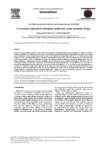
|
A Systematic Approach to Enterprise Architecture Using Axiomatic Design
Farhangmehr Behrouz, Mehdi Fathollah
10th International Conference on Axiomatic Design, 2016
https://www.sciencedirect.com/science/article/pii/S2212827116307478
Today, the organizations have complex structures and therefore, Enterprise Architecture (EA) could provide them with solutions to describe, coordinate, and align their business elements in order to achieve the strategic goals and deploy organizational governance. In this regard, various frameworks offered according to enterprise activities field. Multi-layered and pyramidal structure is the common feature of most frameworks, from strategic planning on top of the pyramid to information technology infrastructure at the bottom. So far, several models and methods are developed to specify the architecture requirements of each layer and trace architectural components at different layers (often with different substances), mainly just by descriptive and graphic tools. Translating and converting strategic requirements to processes, data, and technology, providing the organization big picture in detail and handling change management are the main purpose of EA. These cannot be achieved unless the requirements are accurately and systematically determined from the top to the bottom of the pyramid. Also, the architecture of each layer is designed to respond the requirements of the upper layer, while specifying the exterior and outward relationship between heterogeneous architectural components, not only does not cover all the needs, but also could be misleading for the organization. This paper attempts to deploy a methodology based on Axiomatic Design (AD) by using two axioms to systematically analyze the current enterprises capability and map the requirements of each layer of EA as the design domain into other domains.
|
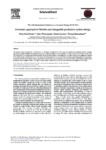
|
Axiomatic-Approach-to-Flexible-and-Changeable-Production-Sys_2016_Procedia-C
Petra Foith-Förster, Marc Wiedenmann, Dennis Seichter, Thomas Bauernhansl
10th International Conference on Axiomatic Design, 2016
https://www.sciencedirect.com/science/article/pii/S2212827116304255
The general increase of products’ customization, the reduction of product life cycle spans and dynamically changing markets challenge manufacturers today. Flexible and changeable production equipment addresses these challenges. It is thus necessary to evaluate the flexibility and changeability of alternative production equipment design solutions during the design process. The paper focusses on an appropriate adaption of Axiomatic Design’s information axiom. The concept of changeability and the use of Axiomatic Design when designing production equipment are first introduced. Second, design-solution-specific barriers to flexibility and changeability are described. Finally, a detailed presentation of the information axiom adaption follows. The paper concludes with a validation case of an automotive body-in-white gripper system design.
|
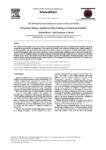
|
Axiomatic Design Applied to Play Calling in American Football
Richard Henley, Christopher A. Brown
10th International Conference on Axiomatic Design, 2016
https://www.sciencedirect.com/science/article/pii/S2212827116308599
The objective of this paper is to learn if the use of functional metrics and the use of parent-child equations can guide design decompositions for winning games. This study is performed in the context of designing play calling strategies in American football. The top level functional metric for FR0, outscore your opponent, is “point differential”, which is controlled through the child metrics that comprise it. Using an on-line game simulator based on statistics from the 2015 season, in over 96 simulated games, two design solutions are tested statistically against last year’s results in the National Football League (NFL). The results show that the solutions based on the application of functional metrics increase the number of wins compared with the actual results from 2015. This suggests that whatever system the NFL coaches were using in 2015 was not the best for winning.
|
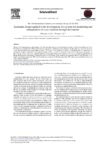
|
Axiomatic Design Applied to the Development of a System for Monitoring and Teleoperation of a CNC Machine through the Internet
L.E.S. Oliveira, A.J. Álvares
10th International Conference on Axiomatic Design, 2016
https://www.sciencedirect.com/science/article/pii/S2212827116307181
The new era of manufacturing, called industry 4.0, will require the intensive use of mechatronics products. In this context, there are Cyber- Physical Systems and Internet of Things (IoT). These are represented by platforms that are integrated through connectivity protocols that permit a wide sharing of information among different devices. The design of these applications requires a methodology that sets requirements by reducing the complexity inherent in the development of these systems. As such, the Axiomatic Design (AD) has the capacity to simplify this kind of design process. This work studies the application of Axiomatic Design to the planning of a system for monitoring and teleoperation through the Internet of a Romi-Galaxy 15M machine tool with CNC Fanuc 18i-Ta, using the open standards OPC-UA and MTConnect. As a result, the functional requirements (FR) were formulated and, consequently, the design parameters (DP), which are represented by classes in an object-oriented application.
|
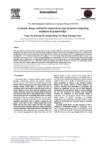
|
Axiomatic Design Method for Supercritical Rotor Dynamics Integrating Nonlinear Deep Knowledge
Yingze Jin, Zhaoyang Shi, Honglun Hong, Fan Zhang, Xiaoyang Yuan
10th International Conference on Axiomatic Design, 2016
https://www.sciencedirect.com/science/article/pii/S2212827116307193
This paper integrates nonlinear deep knowledge with an axiomatic design method for supercritical rotor dynamics in order to overcome the limitation of rotor dynamic design for supercritical rotating machineries. Design methods based on linear theory usually lead to shafting failures in engineering practice, since nonlinear theory has not been well incorporated into rotor dynamic design. This method realizes a four-level decomposition of the functional requirements and mapping of the corresponding design parameters in nonlinear dynamic design for a supercritical rotor-bearing system. In total, 20 design parameters are integrated into the system. A 20×20 axiomatic design matrix is then developed, which is used to obtain a dynamic design flowchart of the system. Under the guidance of the design flowchart, a single span flexible symmetric rotor-bearing system with a single disk is dynamically designed and analyzed. The results show that the axiomatic design method for supercritical rotor dynamics optimizes the design process, the design efficiency and the design results.
|
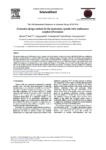
|
Axiomatic Design Method for the Hydrostatic Spindle with Multisource Coupled Information
Qian Jia, Bin Li, Yangyang Wei, Yaolong Chen, Jianlei Wang, Xiaoyang Yuan
10th International Conference on Axiomatic Design, 2016
https://www.sciencedirect.com/science/article/pii/S221282711630748X
The strong coupling among different parts such as bearings, seals, and windings, which are associated with different fields such as tribology, dynamics, and fluid dynamics, should be addressed to design a high-performance hydrostatic spindle. For decoupling and integrating all multisource information, the axiomatic design is using to address the design problems. A mapping with four levels of functional requirements and design parameters (DPs) was developed for the hydrostatic spindle design, and 19 DPs for the physical parts of the hydrostatic motorized spindle were integrated in several parts such as rotor, bearing, and winding. A 19×19 design matrix was built. Using the design matrix, a flow chart for the dynamics design method coupled with multisource information was obtained. The design of a hydrostatic spindle was completed, and the major requirements were assessed. The results show that the dynamics design process and hydrostatic spindle can be optimized using the axiomatic design method.
|
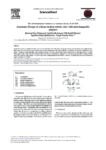
|
Axiomatic Design of a Linear Motion Robotic Claw with Interchangeable Grippers
Bjartmar Freyr Erlingsson, Ingólfur Hreimsson, Páll Indriði Pálsson, Sigurður Jóhann Hjálmarsson, Joseph Timothy Foley
10th International Conference on Axiomatic Design, 2016
https://www.sciencedirect.com/science/article/pii/S2212827116307417
Reykjavik University’s electronic lab has a five-axis CRS Robotics A255 arm used in laboratory exercises that are in need of an improved claw. The current claw limits the robot arm operation duration and dexterity due to its bulk. In addition, the grippers don’t provide a stable grip as it is applied. Axiomatic Design principles were employed to design a claw to be much lighter, more compact and with more precise grip. The new design replaces the current pneumatic actuators with a servomotor. Interchangeable grippers with carefully designed geometries provide better adaptability on oddly shaped objects. The new design allows a simple preloading mechanism to provide the optimal grip force for a complete and capable manipulation solution.
|
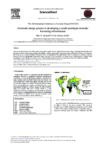
|
Axiomatic Design Process in Developing a model Prototype Rainwater Harvesting Infrastructure
Mirzi L. Betasolo, Carl Anthony Smith
10th International Conference on Axiomatic Design, 2016
http://www.sciencedirect.com/science/article/pii/S2212827116309374
This abstract presentation shall address issues arising from scarcity of water supply due to climate change, increasing demand of the urban population, limited water resource, and the inaccessibility to deliver water supply to rural communities of Papua New Guinea. The rainwater harvesting system is being considered. This paper shows the application of Axiomatic Design (AD) in designing of a prototype rainwater harvester for visual presentation of the infrastructure. The use of AD helps build the model without compromising its feature of the geographical set up of the place. It is gravity driven considering the rainfall scenario, the location, the demand, and health considerations.
|
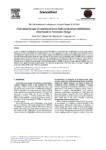
|
Conceptual Design of Customized Lower Limb Exoskeleton Rehabilitation Robot Based on Axiomatic Design
Aibin Zhu, Shengli He, Dayong He, Yangyang Liu
10th International Conference on Axiomatic Design, 2016
https://www.sciencedirect.com/science/article/pii/S2212827116307454
In order to standardize the design process of complex products and improve customer satisfaction and intelligence of specific design scheme, a design case of Lower Limb Exoskeleton Rehabilitation Robot (LLERR) is presented in this paper. Under the precondition that walk assistance and rehabilitation training functions are achieved, higher demands for LLERR from psychological and physiological needs of users are proposed. Based on the research status and market demands of rehabilitation robots, a conceptual design of LLERR with the character of customized gait and customized exoskeleton is presented. The mapping process from functional requirement (FR) domain to design parameter (DP) domain of customized design scheme is analyzed according to Axiomatic Design (AD) theory. Then, an overall design matrix of 11×11, a triangular matrix, is obtained, revealing that the customized design scheme of LLERR is a decoupled design with great reliability. Lastly, the design scheme is optimized through constrains analysis. The correctness and practicality of this design scheme are verified. The paper’s work can provide guidance for the design of the same type products.
|
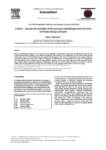
|
Culture – Educational Paradigm Shift Learning Methodologies Derived from Axiomatic Design Principle
Mirzi L. Betasolo
10th International Conference on Axiomatic Design, 2016
https://www.sciencedirect.com/science/article/pii/S2212827116309246
Teacher-centered learning pedagogy is a passive approach but most standard practices in many engineering courses than the active approach that is student-centered learning pedagogy. For a country like Papua New Guinea which is rich in culture diversity, the social structure or group identity forms the lines of conflict affecting teacher or student-centered approach. With the advent of technological tools to support teachers in engaging student, the choices are too many to explore. Consequently, the confusion to which learning methods and technical tools are appropriate to the student that have culture affiliation and use such affiliation in engaging them in higher order thinking, knowledge integration and self-efficacy requires support to get the right instructional methodologies based on the Axiomatic design (AD) principle. The results show that the combination of AD law simplifies what learning design for engineers can create a paradigm shift in culture to educational synergy.
|
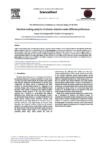
|
Decision-making Analysis of Scheme Selection under Different Preferences
Yanjun Hou, Jianjun Qin, Xinlei Li, Yongfeng Liu
10th International Conference on Axiomatic Design, 2016
https://www.sciencedirect.com/science/article/pii/S2212827116309167
In the conceptual design stage of new product development, one of the major challenges is how to effectively determine the single best scheme from multiple alternatives. Based on the Axiomatic Design Theory, this paper proposes a new method to analyze and compare alternative schemes, and the Markov function is then used to calculate cost and determine the optimization direction of the chosen scheme. The cost of the optimal solution is estimated through calculations with utility functions. To add more details to the final design, it is necessary to consider both the working environment and user preferences, then to further analyze the schemes via fuzzy intuitions in order to determine the best prototyping and optimization strategy. This paper employs the design process of a library robot, which is designed in the context of university campus environment, as an illustrate example to showcase how to use the proposed method.
|
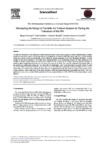
|
Decoupling the Design of Variable Air Volume Systems by Tuning the Tolerances of the DPs
Miguel Cavique, João Fradinho, António Mourão, António Gonçalves-Coelho
10th International Conference on Axiomatic Design, 2016
https://www.sciencedirect.com/science/article/pii/S2212827116308563
An important discussion on the application of the Axiomatic Design Theory (ADT) is how to address coupled designs. Coupled designs are somewhat usual in engineering and call for solutions in the field of ADT. This paper addresses a class of designs where one or more functional requirements can be fulfilled by design parameters of the type “the higher the better”. A good example of this kind of designs is one of the most widespread types of air conditioning systems for office applications: the variable air volume (VAV) system. A VAV system controls the air temperature of multiple rooms by adjusting the flow of cooled air that is supplied by the VAV box that serves each room of the office. The essential functional requirements (FRs) of any modern air conditioning system are: “to control the air temperature”, and “to provide indoor air quality (IAQ)” to each served room. The drawback of the VAV systems is that the renewal of the stale air depends on the heat loading of all the rooms, which makes it a coupled design. This paper shows how this coupled design can be decoupled by using a design parameter (the outdoor airflow), which value may be set large enough to fulfil the related functional requirement (the IAQ). The VAV application serves as an example of the application of a new proposed theorem of the ADT that allows decoupling a matrix equation.
|
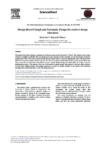
|
Design Record Graph and Axiomatic Design for Creative Design Education
Kenji Iino, Masayuki Nakao
10th International Conference on Axiomatic Design, 2016
https://www.sciencedirect.com/science/article/pii/S2212827116307764
The authors have been offering a graduate level design course at the University of Tokyo. The students form groups of about 5 members to identify their own design goals and construct creative solutions to meet the product functional requirements (FRs). The course teaches Design Record Graph (DRG), a network diagram that starts with the product FR that divides into a number of sub-functions. The division continues until all functional elements are identified, and when every element functional requirement maps to a single element design parameter (DP), the design meets the independence axiom. The projects often start with heavily coupled designs that gradually turn into clean solutions towards their finalized design. The graph expression is easier for design students to get started with functional decomposition without having to work with design matrices.
|
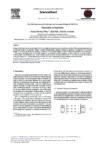
|
Desirable Complexity
Joseph Timothy Foley, Erik Puik, David S. Cochran
10th International Conference on Axiomatic Design, 2016
https://www.sciencedirect.com/science/article/pii/S2212827116304760
Design methodologies devote a great degree of effort on deciphering, decomposing, and simplifying problems. This approach is particularly true in Axiomatic Design to the point that inability to simplify and understand a situation is defined as complexity. The approach with Axiomatic Design is to avoid complexity because complexity is assumed to make a reliable solution intractable. What if an unreliable situation is needed? This paper explores the concept of “desirable complexity”, an application of Suh’s complexity for fields which want to create problems or challenges rather than eliminating them: puzzles, sabotage, physical security, and unique identification. In these areas, inverting AD complexity theory gives suggestions to making duplication and solution discovery challenging by creating seemingly unsolvable problems.
|
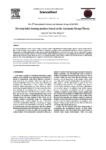
|
Develop Habit-forming Products Based on the Axiomatic Design Theory
Ang Liu, Tian Meng Li
10th International Conference on Axiomatic Design, 2016
https://www.sciencedirect.com/science/article/pii/S2212827116307855
It is every manufacturer’s desire to drive its target customers to form a long-term habit of regularly using its product. Previous studies indicate that the habit of using a certain product can indeed by formed in a systemic manner, once the right sequence is followed. Against such a background, an existing habit-forming product model, namely the Hook Model, is reviewed with respect to its key components of trigger, action, reward, and investment. Essences of the Hook Model, together with its missing pieces, are reformulated, repositioned, and resynthesized based on the Axiomatic Design Theory. It results in an adapted Axiomatic Design process, which is intended to develop the habit-forming products. The step-by-step design process is explained, and an illustrate example is presented.
|
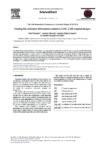
|
Finding the Minimum Information Content in 2-FR, 2-DP Coupled Designs
João Fradinho, António Mourão, António Gabriel-Santos, António Gonçalves-Coelho
10th International Conference on Axiomatic Design, 2016
https://www.sciencedirect.com/science/article/pii/S2212827116306424
Axiomatic Design classifies designs into three basic types: uncoupled, decoupled and coupled. The first type encompasses the ideal designs, where independence is always ensured, the second includes the designs where independence can be achieved using the right sequence to fine-tune the design parameters as to satisfy the given set of functional requirements, while the last comprises designs for which independence can never be achieved. Usually, coupled designs are avoided and designers are encouraged to redesign their solutions until an uncoupled or a decoupled one is achieved. Nevertheless, coupled solutions are often hard to avoid. This paper discusses this issue and uses a simple graphical example on how to adjust either the functional requirements or the design parameters of a 2-FR, 2-DP coupled design that is regarded as being uncoupled, as to attain the minimum information content.
|
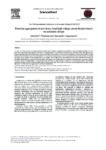
|
Function Aggregation of New Heavy Load High Voltage Circuit Breaker Based on Axiomatic Design
Aibin Zhu, Wencheng Luo, Dayong He, Yangyang Liu
10th International Conference on Axiomatic Design, 2016
https://www.sciencedirect.com/science/article/pii/S2212827116308423
To unify the design process of complex products to meet higher function and performance demands, a practical implementation for a new heavy load high voltage circuit breaker is presented. This paper analyzes the function and performance of a new heavy load high voltage circuit breaker, and addressed needs of being quick, accurate and stable. The superiority of the physical functional basis description method over the traditional functional basis model was demonstrated. The axiomatic design theory is described systematically and in detail using the function decomposition of the high voltage circuit breaker as an example. The concept of functional aggregation unit as the extension and expansion of axiomatic design theory is presented. This aggregation unit extracts essential characteristics of function and performance separately from their concrete structures, avoiding limits of the spring operating mechanism structure caused by reliance on a conventional structure. This function aggregation design method is presented for the design of a transmission unit. These results are of great theoretical significance to guide product innovation based on functional aggregation in axiomatic design theory.
|
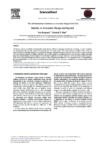
|
Ideality in Axiomatic Design and beyond
Yuri Borgianni, Dominik T. Matt
10th International Conference on Axiomatic Design, 2016
https://www.sciencedirect.com/science/article/pii/S2212827116307776
AD helps to conceive controllable and manageable designs, beyond fulfilling initially posed requirements. According to authors’ experience and understanding, this eases the evolution of designs towards their future versions. Thus, ideal solutions according to Suh’s theory are characterized by a considerable capability of evolving and accelerating technological progress. Conversely, such an aspect is seldom considered in the most diffused definitions of ideality, although it can be easily regarded as a fundamental feature of good designs. In this context, the paper reviews the definitions of ideality dispersed in the literature. A particular attention is dedicated to TRIZ, since ideality represents a pillar of the former USSR-originating theory and many attempts have been performed to combine it with AD. The paper explores the compatibility of the surveyed definitions with AD objectives, revealing theoretical pitfalls, but also pointing out opportunities for increasing ideality in the design practice.
|
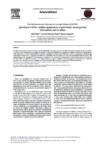
|
Ignorance is Bliss: Sudden Appearance of Previously Unrecognized Information and its Effect
Erik Puik, Joseph Timothy Foley, Darek Ceglarek
10th International Conference on Axiomatic Design, 2016
https://www.sciencedirect.com/science/article/pii/S2212827116305029
The Information Axiom in axiomatic design states that minimising information is always desirable. Information in design may be considered to be a form of chaos and therefore is unwanted. Chaos leads to a lack of regularities in the design and unregulated issues tend to behave stochastically. Obviously, it is hard to satisfy the FRs of a design when it behaves stochastically. Following a recently presented and somewhat broader categorization of information, it appears to cause the most complication when information moves from the unrecognised to the recognised. The paper investigates how unrecognised information may be found and if it is found, how it can be addressed. Best practices for these investigations are derived from the Cynefin methodology. The Axiomatic Maturity Diagram is applied to address unrecognised information and to investigate how order can be restored. Two cases are applied as examples to explain the vexatious behaviour of unrecognised information.
|
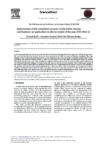
|
Improvement of the Compilation Process of the Italian Income Certifications: An Application on the Tax Model of the Year 2016 (Part 2)
Fernando Rolli, Alessandro Giorgetti, Paolo Citti, Massimo Rinaldi
10th International Conference on Axiomatic Design, 2016
https://www.sciencedirect.com/science/article/pii/S2212827116308484
In this second part, the essay focuses on a real case about the functional decomposition of the application, already dealt in Part 1. The real case described here is about the system design process for the 2016 tax return certification compilation. The input elements of this functional decomposition process are the compilation instructions, the project constraints and the clusters of non-conformity. The proposed method enables to select, on each analysis level, the robust decomposition among the possible substantial decompositions, such as the configuration with the minimum data content. The measure of the system’s data content was determined using the technique of function point. The aim is to provide software designers with a robust logical design of the system, in order to respect the fiscal deadlines, satisfying the user’s requirements and guarantee a solution of the problems in the operating environment. The proposed application has a strong pro-active value, as it leads to the development of ad hoc solutions, avoiding the implementation of unnecessary data entry that does not provide any benefit neither for the taxpayer, nor to the withholding agent. This approach also allows having the necessary technical documentation at hand, to plan and monitor the implementation of the time of action, thus facilitating the system adaptation in the years to come.
|
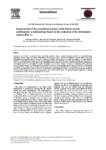
|
Improvement of the Compilation Process of the Italian Income Certifications: A Methodology Based on the Evaluation of the Information Content (Part 1)
Fernando Rolli, Alessandro Giorgetti, Paolo Citti, Massimo Rinaldi
10th International Conference on Axiomatic Design, 2016
https://www.sciencedirect.com/science/article/pii/S2212827116308502
In recent years the Italian tax system has been affected by significant changes. Important legislative reforms have revolutionized the relationship between citizens and public administration. These changes tried to simplify the relationship between citizens and public administration, reducing the burden of bureaucracy on the lives of citizens and businesses. To simplify the completion of income statement taxpayers, the Italian Revenue Agency started to use precompiled statement from 2015. However, many manual actions are still necessary to correct or complete the statement. This paper focuses on the improvement of compilation and control of income certifications in order to reduce non-compliance poured into precompiled statements. The proposed method aims to improve the process by introducing a robust procedure based on Axiomatic Design that is able to quantify the information content of a software project by measuring the information content through the Function Point technique. The developed approach will be able to prevent the generation of non-compliances. In this way, to identify possible critical situations in a proactive way and to avoid classes of non-conformities, it will be possible to optimize the data compilation process to verify compliance with the technical specifications of the Italian Revenue Agency. The goal of the proposed approach is to simplify the collection of fiscal data and create a clearer path for taxpayers.
|
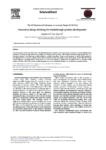
|
Innovative Design Thinking for Breakthrough Product Development
Stephen Lu, Ang Liu
10th International Conference on Axiomatic Design, 2016
https://www.sciencedirect.com/science/article/pii/S2212827116307831
Concept generation is the most critical task in breakthrough product development. This paper presents an Innovative Design Thinking (IDT) framework that models concept generation as a proposition-making activity according to the formation definition of logic propositions. IDT formalizes designers’ verbal statements as either analytic or synthetic propositions through a cyclic operation of “specify-ideate-validate” at each abstraction level to generate a design concept which is logically feasible, functionally simple, and physically certain. Then, IDT guides designers through a zigzagging process which repeats the same cyclic operation at progressively less abstract levels to complete concept generation. Details of this cyclic operation and the zigzagging process are explained in this paper with an illustrative example presented.
|

|
Integration Axiomatic Design with Quality Function Deployment and Sustainable Design for the Satisfaction of an Airplane Tail Stakeholders
Mohammadali Shahi Ashtiany, Alireza Alipour
10th International Conference on Axiomatic Design, 2016
https://www.sciencedirect.com/science/article/pii/S2212827116307211
One of the most important criteria to remain competitive in the marketplace is a suitable product design that satisfy requirements of a diverse range of stakeholders. But, ambiguous, different and general description of customer needs, major technological advance and significant change from traditional requirements (cost, performance etc.) to new requirements such as, economic, environmental, ecological and societal consideration make the design process more complicate. It should be noticed too, while the new requirements have a major effect on the product successfully, the traditional requirement should not be forgotten by designers. Unfortunately, new issues sometimes are deeply coupled with traditional functions, so the current design methodologies are not able to consider them in the product design process. In this regard, the development of new design methods and tools that facilitate design process by consideration new requirements is vital. The Axiomatic Design (AD) approach is one of the most promising design methodology in the field of conceptual design. This method is emerging as a superior method of design, particularly when innovation versus incremental design is needed. This paper focuses on setting up the redesign of the Beech Baron 58 tail, by using AD method that integrate with Quality Function Deployment (QFD) and Eco-Design concepts.
|
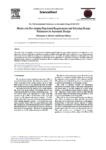
|
Metrics for Developing Functional Requirements and Selecting Design Parameters in Axiomatic Design
Christopher A. Brown, Richard Henley
10th International Conference on Axiomatic Design, 2016
https://www.sciencedirect.com/science/article/pii/S2212827116309465
This work studies the systematic use of metrics for developing design decompositions in axiomatic design (AD). The supposition is that a rigorous use of metrics will guide the formulation of superior functional requirements (FRs), and the selection of the best design parameters (DPs). Good FRs are essential for satisfying the customer needs (CNs). The metrics and equations relating FRs to their parents and to the corresponding DPs can be useful for complying with the axioms and for verbalizing FRs. Quantitative value chains, along with targeting and tolerancing chains, which start with the CNs, are proposed The use of adaptive designs, whereby a design solution can evolve to respond to changing circumstances, are also mentioned.
|
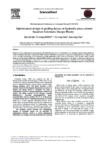
|
Optimization Design of Guiding Device on Hydraulic Press Column Based on Axiomatic Design Theory
Hui-lin Qu, Yi-xiong Feng, Yi-cong Gao, Jian-rong Tan
10th International Conference on Axiomatic Design, 2016
https://www.sciencedirect.com/science/article/pii/S2212827116307223
During the lower speed precision stamping process, the slide block may jitter or crawl because of the unbalance friction on the guide device, which will influence the quality and precision of the workpiece. Therefore, it is necessary to optimize the guiding device on hydraulic press column. Axiomatic design plays a very important role in the optimization design of mechanical products, and it provides a basic scientific framework for the research and design by mapping different domains and refining design process. In this paper, we analyze the guiding device on a large tonnage hydraulic press, and we create the axiomatic design framework of guiding device on hydraulic press column by mapping and refining layer by layer. Through the analysis of the coupling, we optimize the structure of guide device and improve the lower speed precision stamping conditions of hydraulic press.
|
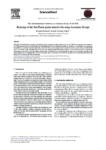
|
Redesign of the SureTrack Grader Transfer Bin Using Axiomatic Design
Kristján Gerhard, Joseph Timothy Foley
10th International Conference on Axiomatic Design, 2016
https://www.sciencedirect.com/science/article/pii/S2212827116307259
The Marel SureTrack grader is equipped with transfer bins for grading of predetermined masses of fish. The bins are expensive to manufacture (≈€e1000) and cracks in the weld joining the sides of the bin have been observed during operation. In this paper, a bin redesigned using Axiomatic Design theory is presented. Axiomatic parameters are devised from reverse engineering of the original bin and attributes seen as desirable to the client. The strength of the redesigned bin and its welds was estimated using finite element analysis. CAD Software was used to estimate the manufacturing cost of the bin once all costing parameters had been defined. For comparison purposes analysis were performed on models of the original design and the redesigned bin. The cost of manufacturing the redesigned bin is 12% less than the cost of manufacturing the SureTrack bin and 47% stronger for the load case analyzed.
|
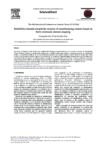
|
Reliability-oriented Complexity Analysis of Manufacturing Systems Based on Fuzzy Axiomatic Domain Mapping
Changchao Gu, Yihai He, Xiao Han
10th International Conference on Axiomatic Design, 2016
https://www.sciencedirect.com/science/article/pii/S2212827116307156
Decreasing the complexity is the effective way to improve the reliability of manufacturing systems. However, the research on the reliability oriented complexity analysis for manufacturing system is rare. A reliable manufacturing system is a prerequisite to ensure the well-designed products be manufactured faultlessly. In this context, this paper proposes an axiomatic complexity analysis model of manufacturing system based on the fuzzy axiomatic domain mapping. Firstly, in terms of the uncertainty of domain mapping information, the fuzzy evaluation matrix for complexity which integrated the weights of experts is constructed based on triangular fuzzy numbers. Secondly, considering the influence of the design parameters (DPs) on the functional requirements (FRs), a quantitative computation approach to manufacturing system complexity is achieved by means of fuzzy evaluation matrix. Finally, a case study is presented to illustrate the validity of the proposed method.
|
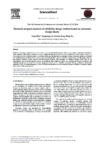
|
Research Progress Analysis of Reliability Design Method Based on Axiomatic Design Theory
Jiang Shao, Fengming Lu, Chenhui Zeng, Ming Xu
10th International Conference on Axiomatic Design, 2016
https://www.sciencedirect.com/science/article/pii/S2212827116307752
With the increasing complexity of the product, the conventional reliability design methods can hardly support the realization of high reliability requirements, and how to carry out high reliability design has become the bottleneck problem which is urgent to be solved in the product development. As a conceptual decision design method of product design, Axiomatic Design is combined with reliability design, which provides a new way to solve the problem of high reliability design of products. This paper analyzes the common reliability design methods and the existed problems. The concepts of Axiomatic Design theory such as the independence axiom and information axiom are introduced. The complexity theory and relationship between complexity and reliability design are reviewed. The research progresses related to the reliability Axiomatic Design method are intensively analyzed. A kind of research thought of using Axiomatic Design theory to solve reliability design problems is proposed. Finally the research trends are prospected.
|
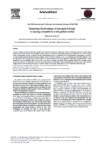
|
Surprising Disadvantage of Uncoupled Design in Staying Competitive in the Global Market
Masayuki Nakao
10th International Conference on Axiomatic Design, 2016
https://www.sciencedirect.com/science/article/pii/S221282711630717X
Axiomatic design recommends uncoupled designs with independent functional requirements (FR) and minimum information in the design parameters (DP). When realized, such uncoupled designs should have advantages in production and business. When faced with trouble, namely, poorly configured parts are easy to identify, and later modifications are easy to implement. Conventional Japanese manufacturers, in contrast, have been producing heavily integrated products with intertwined FR and DP relations. Some, e.g., metallurgy and automobile industries, carry the coupled trend and continue to do so, whereas others, e.g., information device and home appliance steered their uncoupled product towards simplification and compatibility. When viewed from a pure design standpoint, uncoupled designs should be superb. The uncoupled design, however, turned out not so advantageous from the business perspective. Surprisingly, such uncoupled products are easy to copy. Some Japanese companies learned this shocking lesson against axiomatic design after they lost their businesses to new competitors in manufacturing.
|
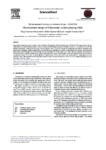
|
The Axiomatic Design of Chessmate: A Chess-playing Robot
Freyja Yeatman Ómarsdóttir, Róbert Bjarnar Ólafsson, Joseph Timothy Foley
10th International Conference on Axiomatic Design, 2016
https://www.sciencedirect.com/science/article/pii/S2212827116307235
Successfully completing a project on time is often a difficult task especially when the project is not well defined. This paper demonstrates the application of Axiomatic Design principles to shape and direct a multi-disciplinary project from initial conception to the final tested product. This product is Chessmate: a small robot which plays chess on a physical board. This robot is intended as a telepresence mechanism or for players who are physically challenged. Verifiable requirements were developed at the beginning of the project based upon this top level goal. These Functional Requirements ensured that the team focused on the necessary capabilities of the end product even while working on electrical, mechanical, and software elements in parallel. Construction of a design matrix identified sources of coupling that would require additional effort to avoid delays. Coupling was reduced in software by careful Application Programming Interface (API) and abstraction development. Testing parameters were explicitly stated by the requirements enabling regular validation in both software and hardware. The result was a complete chess-playing system from start to finish in 12 weeks.
|
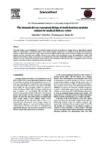
|
The Demand-driven Conceptual Design of Multi-function Modular Cabinet for Medical Delivery Robot
Aibin Zhu, Chao Zou, Wencheng Luo, Renjie He
10th International Conference on Axiomatic Design, 2016
http://www.sciencedirect.com/science/article/pii/S2212827116309283
This paper presents a novel application of the Axiomatic Design (AD) theory to an innovative medical device. A multi-function modular cabinet for medical delivery is designed to deliver various medical supplies simultaneously in consideration of the multi-function delivery demands of typical surgical instruments, organs, drugs, and fluid at modern hospitals. Said demands for medical supplies are systematically analyzed, and four components are established: heating system, cooling system, humidifying system, and dehumidifying system which altogether ensure dynamic balance so as to achieve an uncoupled heat preservation and humidity retention system that meets various delivery demands. By using the multi-function modular cabinet design to build a prototypical medical delivery robot, the proposed technique is proven capable of multi-function delivery and medical resource conservation.
|
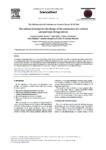
|
The Rational Footsteps for the Design of the Mechanism of a Vertical Carousel-type Storage Device
António Gabriel-Santos, João Rolla, Alberto Martinho, João Fradinho, António Gonçalves-Coelho, António Mourão
10th International Conference on Axiomatic Design, 2016
https://www.sciencedirect.com/science/article/pii/S2212827116306436
The number of design parameters in a vertical carousel-type storage device is larger than the number of functional requirements, which makes it a redundant design. The usual design approach for this kind of mechanical systems is based on trial and error. The aim of this paper is to present a method that leads to the most appropriate sequence in the design of these machines. With this propose in mind, the design equation of the system was examined and subsequently rearranged, so that it reveals that its motion subsystem could be regarded as a decoupled design. This allowed establishing a set of rational footsteps that were used to design the aforesaid system, as described in the paper.
|